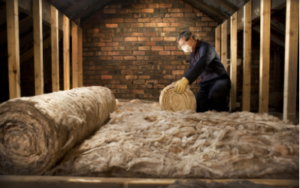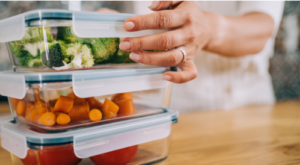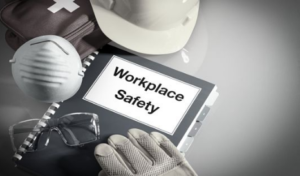When temperatures plunge unexpectedly, staying warm and safe becomes a top priority. A cold snap can disrupt daily life, impact your health, and even pose serious risks if you’re unprepared. Fortunately, with a bit of planning and the right strategies, you can handle freezing conditions effectively. In this article, we’ll explore 4 tips for dealing with a cold snap while safeguarding your comfort and well-being.
What is a Cold Snap?
A cold snap refers to a sudden and significant drop in temperature over a short period. These abrupt weather changes are often accompanied by icy winds, frost, or snow, depending on your location. Cold snaps can last anywhere from a few days to several weeks, and they can disrupt transportation, strain energy resources, and put vulnerable populations at risk.
Why Preparation Matters
Understanding the impact of cold snaps is crucial. According to the World Health Organization (WHO), prolonged exposure to cold temperatures can lead to hypothermia, frostbite, and other health complications. Additionally, cold weather increases the risk of household hazards, such as frozen pipes and heating system failures. Preparing in advance ensures you’re not caught off guard when temperatures plummet.
Tip 1: Insulate Your Home

Keeping your home warm is essential during a cold snap. Proper insulation can make a significant difference in maintaining indoor temperatures and reducing energy costs.
Actionable Steps:
- Seal Drafts: Use weather stripping or caulk to seal gaps around windows and doors. Even small cracks can let cold air in and warm air out.
- Add Insulation: Check your attic, walls, and floors for adequate insulation. If needed, install additional layers to improve heat retention.
- Curtains and Blinds: Keep curtains and blinds closed at night to retain heat. During the day, open them on south-facing windows to let sunlight naturally warm your space.
- Prevent Frozen Pipes: Insulate exposed pipes and keep a small trickle of water running to prevent freezing.
Bonus Tip: Consider using a programmable thermostat to optimize your heating schedule. Lower the temperature when you’re asleep or away, and increase it only when needed.
Tip 2: Dress in Layers

Dressing appropriately for the weather is one of the simplest and most effective ways to stay warm during a cold snap. Layering helps trap heat and provides flexibility to adjust to varying temperatures.
How to Layer Effectively:
- Base Layer: Start with moisture-wicking thermal underwear to keep sweat away from your skin.
- Middle Layer: Add an insulating layer, such as a fleece or wool sweater, to retain heat.
- Outer Layer: Wear a waterproof and windproof jacket to protect against the elements.
- Accessories: Don’t forget insulated gloves, a hat, a scarf, and thermal socks to prevent heat loss from extremities.
Pro Tip: Opt for clothing made from natural fibers like wool or down, which provide better insulation than synthetic materials.
Tip 3: Stock Up on Essentials

A cold snap can disrupt supply chains and make travel hazardous. Ensure you have all the essentials on hand to avoid unnecessary trips outdoors.
Emergency Supplies Checklist:
- Food and Water: Keep at least three days’ worth of non-perishable food and bottled water for each household member.
- Medications: Refill prescriptions and stock up on over-the-counter remedies for colds or flu.
- Heating Fuel: Ensure you have enough heating fuel, such as firewood, pellets, or propane.
- Emergency Kit: Include flashlights, batteries, a first-aid kit, blankets, and a battery-powered radio.
- Backup Power: Invest in a portable generator or power bank to keep essential devices running.
Smart Tip: Prepare a “grab-and-go” bag with warm clothing, essential documents, and emergency supplies in case you need to evacuate.
Tip 4: Prioritize Health and Safety

Cold weather can take a toll on your physical and mental health. Taking proactive measures to stay safe and healthy is key during a cold snap.
Health Tips:
- Stay Active: Engage in light indoor exercises to improve circulation and generate body heat.
- Eat Wisely: Consume warm, nutrient-rich meals to fuel your body and maintain energy levels.
- Hydrate: Drink plenty of fluids, even if you don’t feel thirsty. Dehydration can occur even in cold weather.
- Monitor Vulnerable Individuals: Check on elderly family members, neighbors, and pets to ensure their safety.
Safety Tips:
- Avoid Overexertion: Shoveling snow or performing strenuous outdoor tasks can lead to injuries or hypothermia.
- Drive Carefully: If you must travel, drive slowly and keep an emergency kit in your car.
- Ventilate Heating Devices: Ensure proper ventilation when using space heaters or fireplaces to prevent carbon monoxide poisoning.
Quick Reminder: Know the signs of hypothermia and frostbite. Symptoms include shivering, confusion, and numbness in extremities. Seek medical attention immediately if you or someone else shows these signs.
Conclusion
Dealing with a cold snap doesn’t have to be over whelming. By insulating your home, dressing in layers, stocking up on essentials, and prioritizing health and safety, you can weather the chill with confidence. Remember, preparation is your best defense against sudden temperature drops. Start implementing these tips today to stay warm, safe, and ready for whatever winter throws your way.

